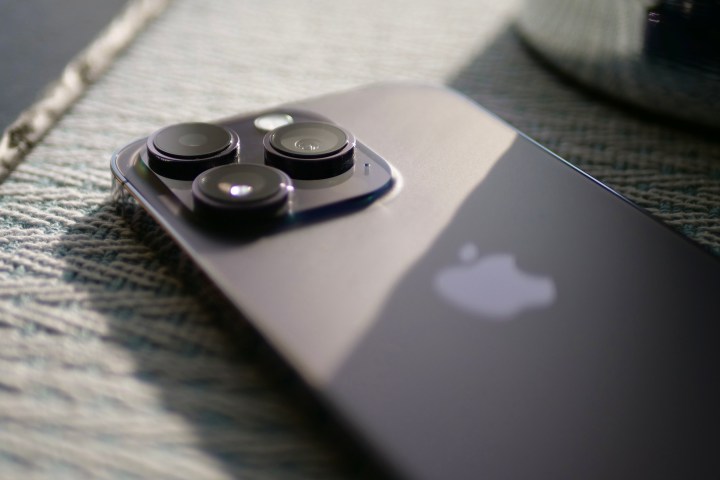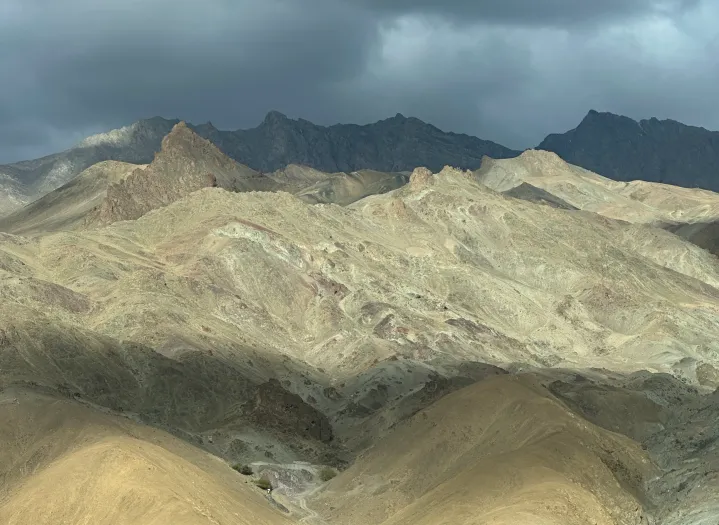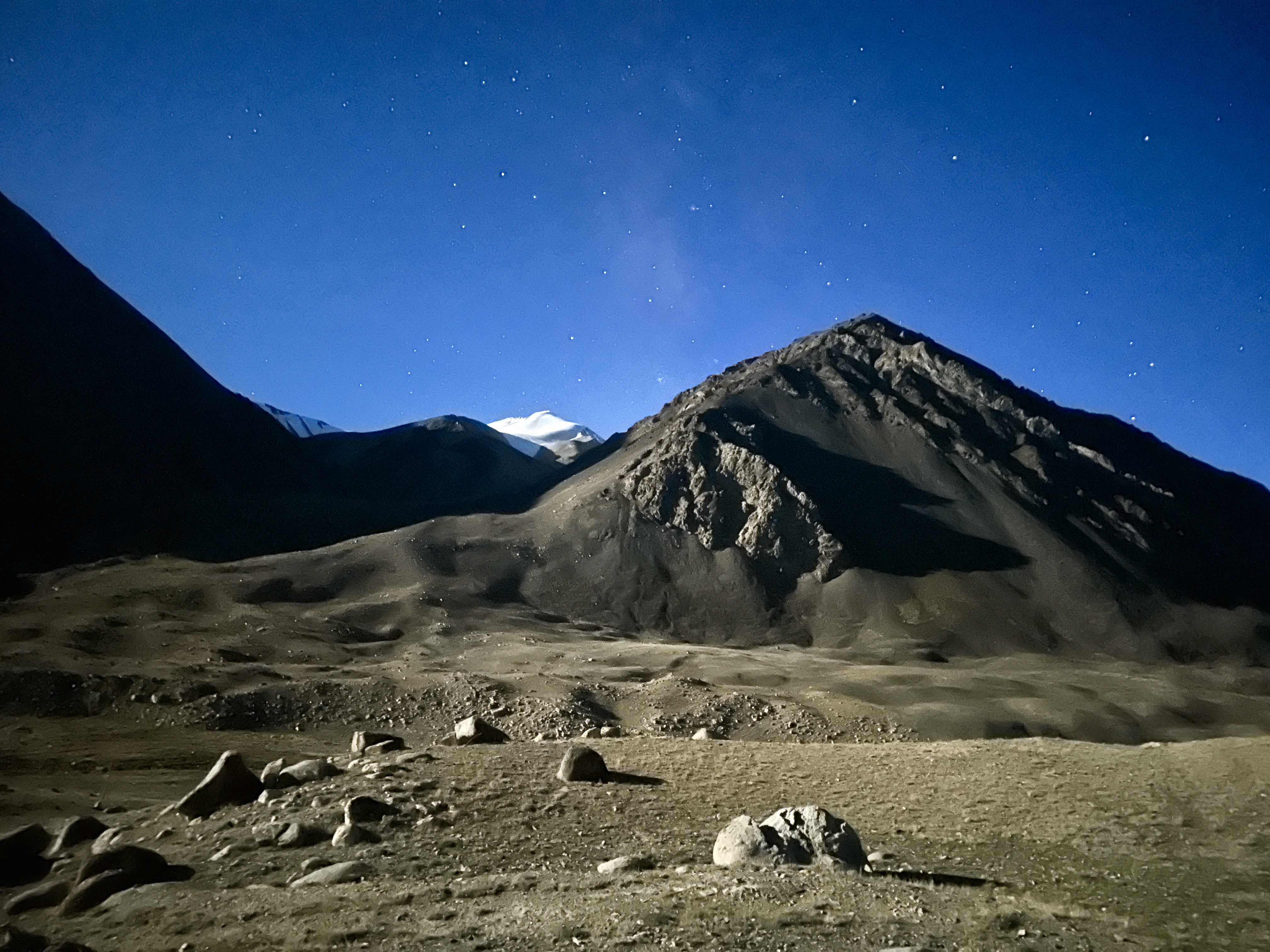
“How the hell did this photo put my DSLR click to shame,” said a fellow reporter after we captured a few night mode shots of a dark valley. The conversation happened soon after we crossed the world’s highest motorable road, the Umling La Pass, at an elevation of 19,300 feet above sea level.
I used the iPhone 14 Pro to capture the images below, and my friend had a Sony DSLR mounted on a tripod to click a long exposure shot. It was never meant to be a comparison between a phone and a DSLR. We all know where that conversation goes. A majority of elements that are visible in the photo were nearly invisible to the naked eye, which makes it even more impressive.
But the exclamation of praise for a phone, that too, from a seasoned photojournalist, encouraged me to do a little experiment. I swapped SIMs and handed over my iPhone 14 Pro to Md. Meharban — a photojournalist whose work has appeared at outlets like National Geographic, The New York Times, The Atlantic, and Reuters, among others.
We’ve had our fair share of debates discussing smartphone cameras over the years, and I’ve always failed to convince him that Google Pixels are better than iPhones. This time around, we put the
Over the course of a week, the
How to take incredible smartphone photos

There’s a world of difference between the scenes captured by a photojournalist and an average
“Don’t click photos just for the sake of it. Before you press the shutter, tell yourself that the photo you are about to click has to tell a story. Once you have that in mind, compose your frame accordingly,” he adds. The point is valid. Even for basic product photography, we make adjustments to highlight the aspect that is going to explain something.
Here are a few fundamental tips that can make your photos stand out:
- Enable gridlines from the viewfinder. Once there, try to dedicate your subject to one-third of the frame and leave the rest for the surroundings to set the scene for a narrative.
- See if the environment around you follows any geometry. Look for lines and diagonal arrangements, and accordingly adjust the frame with your subject as the centerpiece.
- If your frame has natural openings, like windows, gates, doors, etc., try to find any symmetry or lines and adjust the frame accordingly.
- A vantage point that can show the contrasting colors and reality of a frame is a recipe for a great shot.
- When taking a close-up shot — say, a person or animal — go for a slightly off-center approach where one eye aligns with the vertical center of the frame. This approach gives the impression that the eye in focus is following the lens.
- Find an object that disrupts a pattern or breaks the symmetry. Make it the focal point and let the element of anarchy become the story-teller.
- Don’t be afraid of playing with advanced tools. A slight change in exposure value and depth adjustment can do wonders.
All you need is an eye

While we’re talking about a fairly advanced kit like the
Marcella tells me that it’s the first feature film with such a degree of
In fact, the film’s trailer is overwhelmingly footage shot on an iPhone. For post-production, the crew turned to Adobe Premiere Pro, and they didn’t have to employ a sound engineer. Yes, lighting poses a challenge due to sensor size limitations, but it’s amazing to see how much one can accomplish from a seemingly outdated phone with a bit of patience and creativity.
Why the iPhone 14 Pro is still so good

A recurring theme that I have heard from professional photographers and journalists is that they master the fundamentals first — and then bend those rules. But at the end of the day, it’s a trial-and-error adventure. As you experiment, you learn and refine the craft. That doesn’t mean you need a DSLR to get started. A phone like the
In fact, it offers a healthy bunch of tricks that can eclipse even what a DSLR or pro-grade editing software can accomplish. Take, for example, filters. They are a convenient way to get edgy with the natural scenery, but that’s all to them.
A couple of years ago, Apple introduced the Photographic Styles, which let you preview what a scene would look like with a unique lens before you press the shutter button. Think of it like putting transparent crystals of different in front of the camera to capture a scene in an entirely different light.
The best part about photographic styles is that you can adjust the tone and warmth of each style using a slider to achieve the exact color profile you seek. But what really surprised me during the trip was just how good the night mode experience has come.

I have always held Google’s Pixel phones in high regard for their low-light capture. But the shots captured by the
It’s not as if the Apple phone turned a night frame into a daylight scenery. But the level of noise suppression, control over grainy texture, and colors that it could extract truly surprised me. Portrait captures also turned out equally good, with accurate edge clearance and a beautiful bokeh effect.
Once again, the

What really impressed us was the Cinematic Mode, which does an impressively good job of keeping the focus locked in a dynamic frame. It’s mighty impressive, but what truly surpasses this video capture trick is the ability to edit those videos natively on an iPhone. I am not talking about basic edits like trimming or applying filters.
We’re looking at changing the point of focus and even adjusting the strength of the background blur effect. Of course, the A16 silicon inside lends a helping hand, but being able to perform that kind of demanding edit natively on a phone is something that needs to be experienced to really realize its magnitude.
At the end of the day, I couldn’t help but ponder over the merits of frequent iPhone upgrades. Stabilization is another aspect that puts the

I recently wrote a story asking where exactly the “Pro” upgrades exist for the iPhone 15 Pro pair. After putting the
So, is it enough to replace a DSLR? “Not quite. But if need be, I can definitely see myself using it for time-sensitive assignments without any second thoughts,” says Meharban. That’s still a victory, and for a regular person, a reason strong enough to stick with their trusty
Editors' Recommendations
- This one Apple Fitness feature completely changed how I exercise
- Nomad’s new iPhone case and Apple Watch band may be its coolest yet
- 5 phones you should buy instead of the iPhone 15
- Why you should buy the iPhone 15 Pro instead of the iPhone 15 Pro Max
- iPhone SE 4: news, rumored price, release date, and more






